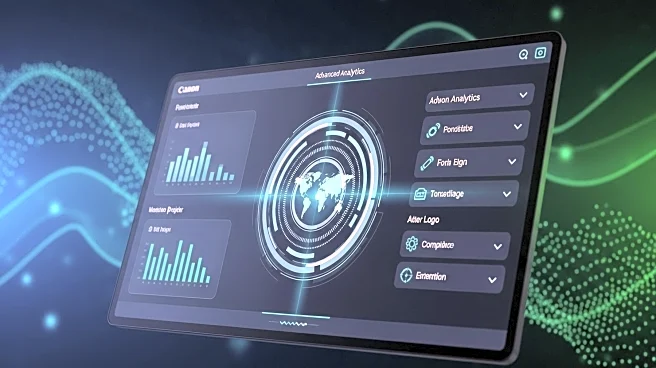What's Happening?
The U.S. solar industry is experiencing significant growth, with solar energy accounting for 69% of new capacity additions in the first quarter of 2025. Despite this expansion, the industry faces a shortage of qualified engineers, particularly those experienced as Engineers of Record (EORs), which is crucial for managing the complexity and speed of utility-scale solar projects. This shortage is causing costly redesigns, delays, and missed deadlines, impacting the financial viability of projects. Civil construction costs, such as grading, can vary significantly based on site conditions, with costs ranging from $4 to $15 per cubic yard. These engineering challenges are exacerbated by the growing size and compressed timelines of projects.
Why It's Important?
The engineering bottleneck in the solar industry poses a significant risk to the financial and operational success of utility-scale solar projects. As the demand for solar energy continues to rise, the inability to meet technical and regulatory requirements could hinder the industry's growth and its contribution to renewable energy goals. The shortage of experienced engineers could lead to increased costs and delays, affecting developers and EPCs. Addressing these challenges is crucial for maintaining the momentum of solar energy adoption and ensuring the industry's ability to meet future energy demands.
What's Next?
To mitigate the engineering bottleneck, some teams are adopting digital platforms to streamline civil and electrical workflows, reducing costs and avoiding redesigns. Project management dashboards and design optimization tools are being implemented to enhance productivity and quality control. These tools help scale the expertise of available engineers, allowing them to manage more projects without compromising quality. The industry must also focus on increasing awareness and access to high-quality engineering programs to attract new talent and address the labor shortage in the long term.
Beyond the Headlines
The engineering challenges in the solar industry highlight the need for scalable solutions that can adapt to the growing demand for renewable energy. The integration of smarter software and digital tools not only addresses immediate bottlenecks but also sets the stage for more efficient project delivery in the future. These advancements could lead to a more resilient and sustainable solar industry, capable of meeting the increasing energy needs while minimizing environmental impact.











